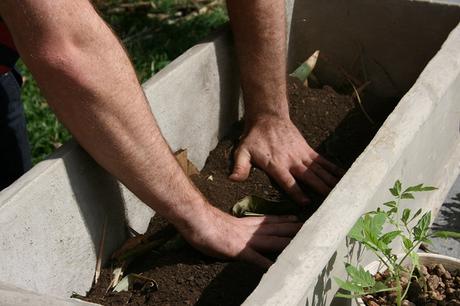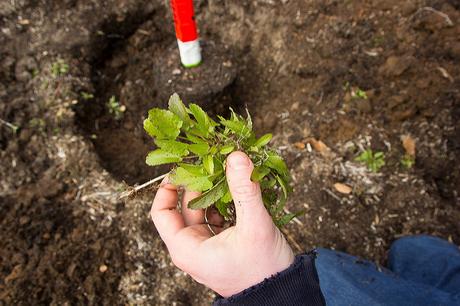What is Permaculture?
Permaculture is a concept that necessitates the need of working with, rather than against nature, through the observance and following of nature’s patterns when designing perennial agricultural systems and human settlements. Otherwise stated, it’s a creative human settlement design process based on holistic-systems philosophy guided and defined by ethics and design principles that integrate sustainable economic and social food production techniques. Permaculture was developed, and the term coined by Bill Mollison and David Holmgren in 1978.
The ethics are three namely: care for people, care for the earth, and fair share. Permaculture advocates for the creation of human systems that looks at plants and animals in all their functions based on natural ecosystems. The practice of peramculture simply seeks to imitate the relationships and patterns found in nature which are then employed in all variations of human habitation such as agriculture, suitable technology, ecological building, economics, and even education.

According to PermacultureNews,
“Permaculture integrates land, resources, people and the environment through mutually beneficial synergies – imitating the no waste, closed loop systems seen in diverse natural systems. Permaculture studies and applies holistic solutions that are applicable in rural and urban contexts at any scale. It is a multidisciplinary toolbox including agriculture, water harvesting and hydrology, energy, natural building, forestry, waste management, animal systems, aquaculture, appropriate technology, economics and community development.”
By using the philosophy of permaculture in our day to day activities, it can help humanity transition from being dependent consumers to becoming responsible producers. The strategies and techniques used may be different based on variations in climatic conditions, location and resources available, but it has to use the guidance of a holistic-system which can help populations prepare for uncertain future and become more resilient to environmental change.
A system of design that provides all of the needs for humanity in a way that benefits the environment.
~ Geoff Lawton
What are Design Principles of Permaculture?
The permaculture philosophy is guided by 12 core design principles as the definitive pathway towards environmental sustainability as well as sustainable living. The 12 design principles as coined by David Holmgren – permaculture brain child, is as outlined below:
1. Observe and Interact: This design principle signifies the proverb “Beauty is in the mind of the beholder.” That said, in taking time to observe nature, we can draw different perspectives to assist in comprehending various components in natures’ system. With this in place, we can design and implement solutions that are desirable for our situations.
2. Catch and Store Energy: This design principle is guided by the proverb “Make hay while the sun shines.” This means, it is always advisable for people to develop systems that collect and save resources when they are in surplus so that they can be used in times of need or when the resources become scarce.
3. Obtain a yield: The proverbial phrase guiding this design principle is “You can’t work on an empty stomach.” Accordingly, the meaning of this design principle is that we have to ensure that we make ourselves useful always and persist on attaining useful rewards as part of the work that we do.
4. Apply Self Regulation and Accept Feedback: The proverb guiding this design principle is “The sins of the fathers are visited on the children of the seventh generation.” Put differently, as humans we consistently need to discourage improper behavior or activity to ensure that systems continue to serve the right purpose and satisfactorily as they are intended to fulfill. Ultimately, it does away with negative feedback and if at all there is any feedback, it has to be used to correct the system.
5. Use and Value Renewable Resources and Services: The design principle of using and assigning value to renewable resources and services is directed by the proverb “Let nature take its course.” Through this design principle, we are taught that we should make the best use of nature’s abundance to reduce our consumption behavior and reliance on non-renewable resources.
6. Produce No Waste: Simply put, “Waste not, want not” or “A stitch in time saves nine” is the proverb that best suits this design principle. By assigning value and making the best use of all the resources availed to us ensures that nothing goes to waste. In the long-haul, reduced wastage reduces our spending, resource depletion, and dependence on new resources/materials/utilities.
7. Design From Patterns to Details: Well, the phrase “Can’t see the forest for the trees,” is the basis of this design principle. The observations we make in the diverse patterns of nature and society are great reference points for designing sustainable living and environments. Otherwise stated, the many patterns in nature and our society can be used as the pillar of our designs and improvements can be made as we make more and more observations.
8. Integrate Rather Than Segregate: “Many hands make light work” is the phrase that drives this permaculture design principle. In elaboration, implementing this principle means having things in order by putting the right things in the right place. This is because there exist associations between things and they normally work interchangeably to support each other.
9. Use Small and Slow Solutions: The phrase “Slow and steady wins the race” or “The bigger they are, the harder they fall” predominantly emphasize the integral philosophy of this design principle. Simply defined, small and slow systems are easier to manage compared to bigger ones, which contributes to better utilization of local resources and advancement of more sustainable outcomes.
10. Use and Value Diversity: The proverb “Don’t put all your eggs in one basket” appropriately aligns with the philosophy of this design principle. It necessitates the need of embracing and placing value on diversity so as to reduce vulnerability to a variety of threats and to exploit as well as explore the uniqueness of nature.
11. Use Edges and Value the Marginal: Here the guiding phrase is “Don’t think you are on the right track just because it’s a well-beaten path.” It seeks to define the fact that the interface between things is where the most appealing phenomenon occurs. The most diverse, valuable and productive components in a system are usually realized through the edges and assigning value to the margins.
For instance, the urban setting is full of diverse edges and margins with their own unique possibilities for transformation. Front yards could be used to establish fruit gardens; balconies could be used to put up balcony gardens: and many other limitless possibilities.
12. Creatively Use and Respond to Change: The overriding phrase for this design principle is “Vision is not seeing things as they are but as they will be.” On this account, the most instrumental impacts on inevitable change can only be realized through the careful observation of our systems and then intervening at the appropriate time with the most suitable measures.

How Permaculture is Different From Organic Gardening?
The definition of permaculture is sometimes confused with organic gardening. However, peramculture involves more than organic gardening as it is a comprehensive and dynamic system and can be practiced at different levels and in various ways. It goes beyond the use of farming practices and organic gardening by integrating both the home and garden to create a system that impacts less on the environment. To help differentiate between the two, below are the finer details.
Permaculture focuses on promoting an overall life cycle of care. As opposed to organic agriculture which utilizes closed-production systems, permaculture is predominantly an open-production system where energy is effectively utilized by one element and passed on to be used by another element before exiting the system. This system is achieved in permaculture through:
- Focus on closing the water and nutrient cycle by reducing the dependence on inputs and using waste.
- Establishment of healthier soil and maintaining produce diversity whereas organic farming mostly focuses on specific produce production. Diversity in production bring about commitment and holistic engagement during the production process.
- Ensuring accountability for waste by aiming at doing with wastage as any excess nutrients are utilized by other components in the system.
As opposed to organic farming which utilizes a specific system of non-use of chemical inputs and minimal environmental interference, permaculture uses a holistic process of imitating nature by preserving water, soil, and genetic capital. What’s more, whereas organic farming uses a planned farming system on the site, permaculture uses the space intensively as the site looks more like a food-forest together with other diverse plants such as perennials and herbs.
Permaculture also optimizes the use of natural energy such as wind and animal waste, and the food produce as well as the habitat is for the use of both the people and native birds and animals.
Permaculture is mostly dependent on observation whereas organic farming is based on particular naturally set farming standards. For this reason, permaculture is adaptable to suit various conditions.
Organic farming has higher yields per product but fewer products, while permaculture has a wider range of products namely food, recreation, fuel and habitat.
Organic produce matures at the same time whereas in permaculture produce are utilized and mature at different times throughout the year.
In organic farming, pest and disease control is closely monitored while in permaculture it is all about integrated pest and disease management.
In organic farming, the garden is primary used for production purposes while in permaculture the garden is used to nature home (give shade, deflect wind, filter air e.t.c).
In organic farming, the water source is used for irrigation while in permaculture it majorly determines the shape of the garden.
In organic farming, the entire harvest is sent to the market or used for human consumption while in permaculture the produce/harvest also has to be shared with the working animals

